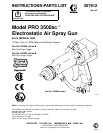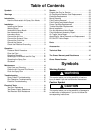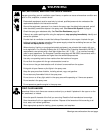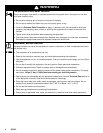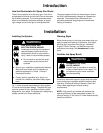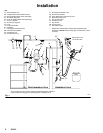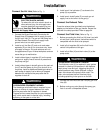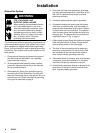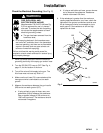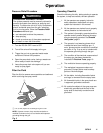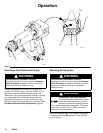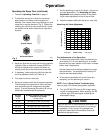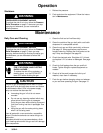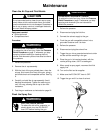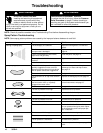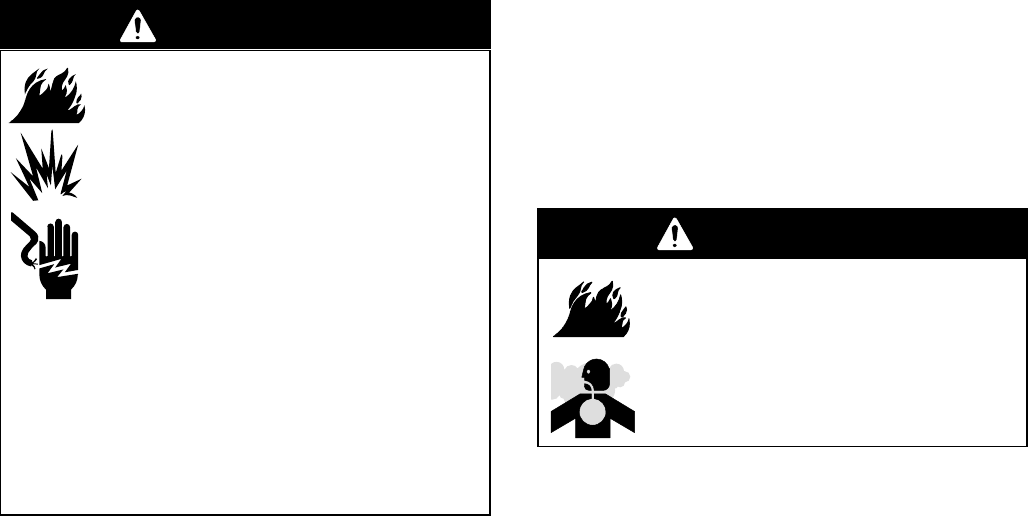
307912 5
Introduction
How the Electrostatic Air Spray Gun Works
The air hose supplies air to the spray gun. Part of the
air operates the turbine and the rest of the air atomizes
the fluid being sprayed. The turbine generates power,
which is converted by the power cartridge, to supply
high voltage current to the gun’s ionizing electrode.
The pump supplies fluid to the hose and gun, where
the fluid is electrostatically charged as it passes the
electrode. The charged fluid is attracted to the
grounded workpiece, wrapping around and evenly
coating all surfaces.
Installation
Installing the System
WARNING
FIRE, EXPLOSION, AND
ELECTRIC SHOCK HAZARD
Installing and servicing this equipment
requires access to parts which may
cause electric shock or other serious
injury if work is not performed properly.
D Do not install or service this equip-
ment unless you are trained and
qualified.
D Be sure your installation complies with National,
State and Local codes for the installation of
electrical apparatus in a Class I, Group D
Hazardous Location.
D Comply with all applicable local, state, and
national fire, electrical, and other safety regula-
tions.
Fig. 1 shows a typical electrostatic air spray system.
It is not an actual system design. The particular type
and size system for your operation must be custom
designed for your needs. For assistance in designing a
system, contact your Graco distributor.
Warning Signs
Mount warning signs in the spray area where they can
easily be seen and read by all operators. An English
Warning Sign is provided with the gun. Additional
English, French, German, and Spanish signs are
available at no charge. See Accessories to order
them.
Ventilate the Spray Booth
WARNING
FLAMMABLE OR TOXIC
VAPOR HAZARD
Provide fresh air ventilation to avoid the
buildup of flammable or toxic vapors. Do
not operate the gun unless ventilation
fans are operating.
Electrically interlock the gun air supply with the ventila-
tors to prevent gun operation without ventilating fans
operating. Check and follow all National, State, and
Local codes regarding air exhaust velocity
requirements.
NOTE: High velocity air exhaust will decrease the
operating efficiency of the electrostatic system. Air
exhaust velocity of 100 ft/min (31 linear meters/minute)
should be sufficient.



